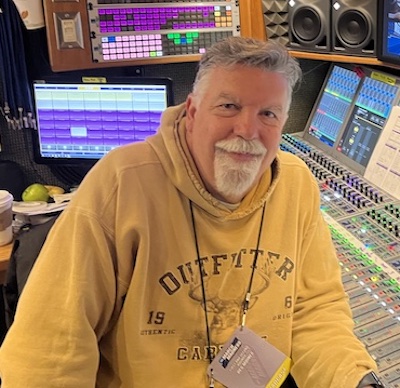For the NFL in Europe, It’s All About the Crowd Sound
A1 Dave Grundtvig changes his protocol to capture consistently loud European fans
Story Highlights
London calling — again. After besting the Atlanta Falcons on Oct. 1 at Wembley Stadium on ESPN, the Jacksonville Jaguars defeated the Buffalo Bills a week later at Tottenham Hotspur Stadium on the NFL Network. That venue and network will host the Baltimore Ravens and the Tennessee Titans on Oct. 15. Then, the NFL goes to Germany. NFL Network will air the Miami Dolphins vs. Kansas City Chiefs on Nov. 5 and the Indianapolis Colts and vs. England Patriots at Frankfurt Stadium in Frankfurt, Germany.
The games in Europe look remarkably like any played in the U.S., with onscreen graphics and familiar gridirons painted onto the soccer pitches. Much of the audio will be equally recognizable, with quarterback cadences and helmet clashes picked up by a well-established combination of NFL-controlled player mics and broadcasters’ sideline parabolics. But the crowd sounds — those are different.

WBD Sports’ Dave Grundtvig: “The big thing is to make sure it’s a nice, robust, full mix but one in which we also protect the announcers. There’ll be a lot to listen for.”
“Most of what I’ll be doing is the same as if I’m doing a game in the States,” explains WBD Sports Senior Audio Supervisor, Remote Operations, Dave Grundtvig, who is serving as A1 for the NFL Network broadcasts, working from EMG Nova 111 van. “What I’ll be doing differently is capturing the audience: the European fans react differently and at different times than the fans do in the U.S. For instance, a first down for the home team in the States, and the crowd will cheer loudly. But here, they might not react at all, maybe because they don’t necessarily understand the game as well. On the other hand, they’ll react to things that don’t necessarily need a reaction to the level at which they would cheer it.”
In mixing previous games in Europe, Grundtvig has noticed that the crowds will be consistently loud throughout the game no matter what happens. “It is such a raucous crowd, and there is so much energy in that stadium. The play didn’t matter. These fans were just constantly cheering and excited.”
Audio Mixing Is the Same as in the U.S.
As a result, Grundtvig, who is mixing all the NFL Network games with his son Nicholas Grundtvig working as audio submixer, changes his crowd-capture protocol. The main change is the use of six pairs of microphones, mostly Shure VP88 stereo condensers, deployed in a mid-side (M-S) configuration. He says this arrangement allows him to cover the stadium’s seating from high to low on all sides and gives him a consistent soundfield when he changes the mic balances as the energy moves from one side to another, a typical crowd-sound dynamic in European football. He’ll mix that with the NFL enhanced feed provided by the league, which includes the scrimmage-line audio.
“My approach to mixing an NFL game here is the same as in the States,” he notes, “and I’m deploying the same gear. There’ll be more cameras and more tape machines than the games I have in the States, but there’s no secret tricks being deployed here that I don’t do back home.”
(The audio was good enough to clearly catch Buffalo quarterback Josh Allen’s cadence “LeBron James, LeBron James!” for a particular play, which also caught the attention of James himself.)
In addition to the game mix, Grundtvig mixes the audio for the NFL’s expansive 2½-hour studio show during the games. The audio comprises a host position with four mics, an outside plaza position with two mics, and an RF reporter who has three positions, and the entire audio mix is sent to the NFL Network facility next to Los Angeles’s SoFi Stadium for a final mix to air.
As with an NFL game in the U.S., Grundtvig will fill the surrounds in the 5.1 broadcast mainly with crowd and ambient sounds. But the crowd sound occupies the greater share of his attention as he mixes, trying to anticipate the swells and the (slightly) quieter moments — for instance, crowd noise may wane momentarily right after a flag is thrown for an obscure rules infraction — to give U.S. viewers a sense that the game is being played in a very different environment.
“NFL football — American football — is becoming very popular over here,” he acknowledges. “The fans are learning more and more about the fine points of the game. I think a lot of the challenge for the audio person is to authentically capture that energy that the fans are going to provide. That’s what I’m going to have fun with. The big thing is to make sure it’s a nice, robust, full mix but one in which we also protect the announcers. There’ll be a lot to listen for.”
